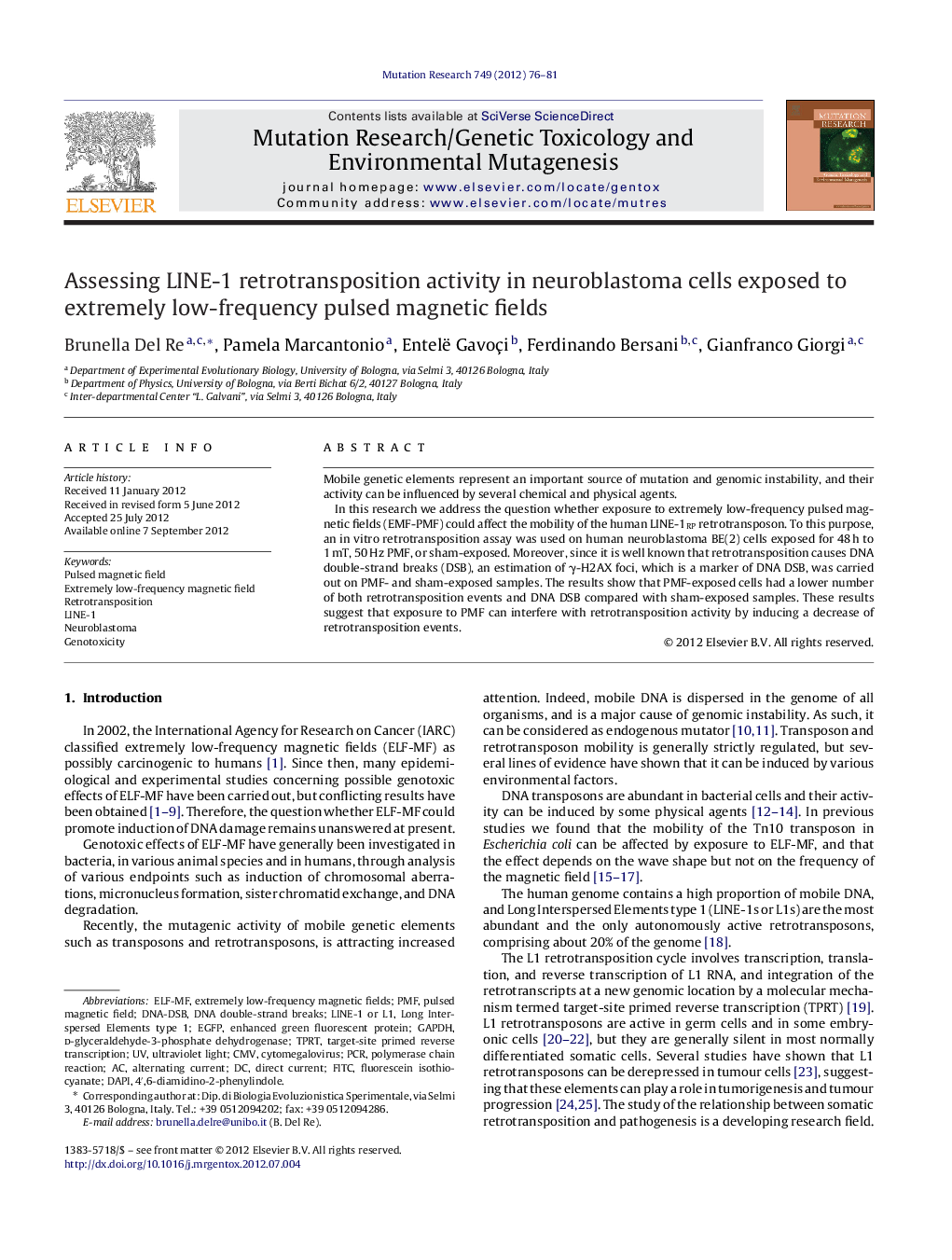| Article ID | Journal | Published Year | Pages | File Type |
|---|---|---|---|---|
| 8456557 | Mutation Research/Genetic Toxicology and Environmental Mutagenesis | 2012 | 6 Pages |
Abstract
In this research we address the question whether exposure to extremely low-frequency pulsed magnetic fields (EMF-PMF) could affect the mobility of the human LINE-1RP retrotransposon. To this purpose, an in vitro retrotransposition assay was used on human neuroblastoma BE(2) cells exposed for 48 h to 1 mT, 50 Hz PMF, or sham-exposed. Moreover, since it is well known that retrotransposition causes DNA double-strand breaks (DSB), an estimation of γ-H2AX foci, which is a marker of DNA DSB, was carried out on PMF- and sham-exposed samples. The results show that PMF-exposed cells had a lower number of both retrotransposition events and DNA DSB compared with sham-exposed samples. These results suggest that exposure to PMF can interfere with retrotransposition activity by inducing a decrease of retrotransposition events.
Keywords
TPRTFITCeGFPDNA-DSBGAPDHELF-MFPMFDAPI4′,6-diamidino-2-phenylindoled-glyceraldehyde-3-phosphate dehydrogenaseDNA double-strand breaksRetrotranspositionAlternating currentDirect CurrentLINE-1GenotoxicitycytomegalovirusCMVfluorescein isothiocyanateExtremely low-frequency magnetic fieldpulsed magnetic fieldultraviolet lightNeuroblastomapolymerase chain reactionPCRenhanced green fluorescent protein
Related Topics
Life Sciences
Biochemistry, Genetics and Molecular Biology
Cancer Research
Authors
Brunella Del Re, Pamela Marcantonio, Entelë Gavoçi, Ferdinando Bersani, Gianfranco Giorgi,
